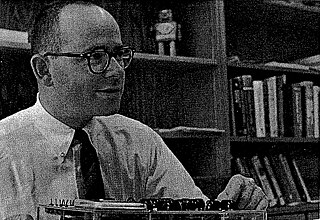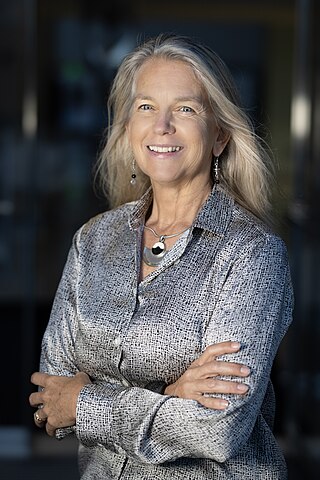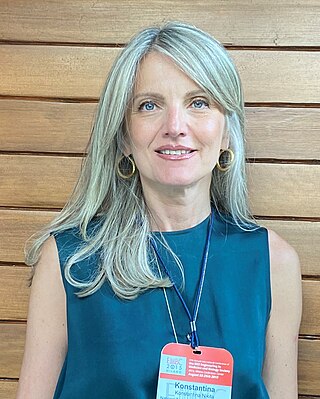
Biomedical engineering (BME) or medical engineering is the application of engineering principles and design concepts to medicine and biology for healthcare applications. BME is also traditionally logical sciences to advance health care treatment, including diagnosis, monitoring, and therapy. Also included under the scope of a biomedical engineer is the management of current medical equipment in hospitals while adhering to relevant industry standards. This involves procurement, routine testing, preventive maintenance, and making equipment recommendations, a role also known as a Biomedical Equipment Technician (BMET) or as a clinical engineer.

Functional electrical stimulation (FES) is a technique that uses low-energy electrical pulses to artificially generate body movements in individuals who have been paralyzed due to injury to the central nervous system. More specifically, FES can be used to generate muscle contraction in otherwise paralyzed limbs to produce functions such as grasping, walking, bladder voiding and standing. This technology was originally used to develop neuroprostheses that were implemented to permanently substitute impaired functions in individuals with spinal cord injury (SCI), head injury, stroke and other neurological disorders. In other words, a person would use the device each time he or she wanted to generate a desired function. FES is sometimes also referred to as neuromuscular electrical stimulation (NMES).
Neuroprosthetics is a discipline related to neuroscience and biomedical engineering concerned with developing neural prostheses. They are sometimes contrasted with a brain–computer interface, which connects the brain to a computer rather than a device meant to replace missing biological functionality.
Neural engineering is a discipline within biomedical engineering that uses engineering techniques to understand, repair, replace, or enhance neural systems. Neural engineers are uniquely qualified to solve design problems at the interface of living neural tissue and non-living constructs.
In physiology, motor coordination is the orchestrated movement of multiple body parts as required to accomplish intended actions, like walking. This coordination is achieved by adjusting kinematic and kinetic parameters associated with each body part involved in the intended movement. The modifications of these parameters typically relies on sensory feedback from one or more sensory modalities, such as proprioception and vision.

Bernard Widrow is a U.S. professor of electrical engineering at Stanford University. He is the co-inventor of the Widrow–Hoff least mean squares filter (LMS) adaptive algorithm with his then doctoral student Ted Hoff. The LMS algorithm led to the ADALINE and MADALINE artificial neural networks and to the backpropagation technique. He made other fundamental contributions to the development of signal processing in the fields of geophysics, adaptive antennas, and adaptive filtering. A summary of his work is.

Dava J. Newman is an American aerospace engineer. She is the director of the MIT Media Lab and a former deputy administrator of NASA. Newman is the Apollo Program Professor of Aeronautics and Astronautics and Engineering Systems at the Massachusetts Institute of Technology. She has been a faculty member in the department of Aeronautics and Astronautics and MIT's School of Engineering since 1993.
Neurorobotics is the combined study of neuroscience, robotics, and artificial intelligence. It is the science and technology of embodied autonomous neural systems. Neural systems include brain-inspired algorithms, computational models of biological neural networks and actual biological systems. Such neural systems can be embodied in machines with mechanic or any other forms of physical actuation. This includes robots, prosthetic or wearable systems but also, at smaller scale, micro-machines and, at the larger scales, furniture and infrastructures.
The space mapping methodology for modeling and design optimization of engineering systems was first discovered by John Bandler in 1993. It uses relevant existing knowledge to speed up model generation and design optimization of a system. The knowledge is updated with new validation information from the system when available.
As humans move through their environment, they must change the stiffness of their joints in order to effectively interact with their surroundings. Stiffness is the degree to a which an object resists deformation when subjected to a known force. This idea is also referred to as impedance, however, sometimes the idea of deformation under a given load is discussed under the term "compliance" which is the opposite of stiffness . In order to effectively interact with their environment, humans must adjust the stiffness of their limbs. This is accomplished via the co-contraction of antagonistic muscle groups.

Ravi V. Bellamkonda is an Indian-American biomedical engineer and academic administrator. Since 2021, he has served as Provost and Executive Vice President for Academic Affairs at Emory University in Atlanta, Georgia. Bellamkonda was previously Vinik Dean of the Pratt School of Engineering at Duke University.
The Case Western Reserve University Department of Biomedical Engineering launched in 1968 as one of the first biomedical engineering programs in the world. Formally incorporated in both the School of Engineering and School of Medicine, the department provides full research and education programs and is consistently top-ranked for graduate and undergraduate studies, according to U.S. News & World Report.

René Vidal is a Chilean electrical engineer and computer scientist who is known for his research in machine learning, computer vision, medical image computing, robotics, and control theory. He is the Herschel L. Seder Professor of the Johns Hopkins Department of Biomedical Engineering, and the founding director of the Mathematical Institute for Data Science (MINDS).
Anant Madabhushi is the Donnell Institute Professor of Biomedical Engineering at Case Western Reserve University (CWRU) in Cleveland, Ohio, USA and founding director of CWRU's Center for Computational Imaging and Personalized Diagnostics (CCIPD). He is also a Research Scientist at the Louis Stokes Cleveland Veterans Administration (VA) Medical Center in Cleveland, OH, USA. He holds secondary appointments in the Case Western Reserve University departments of Urology, Radiology, Pathology, Radiation Oncology, General Medical Sciences, Computer & Data Sciences, and Electrical, Computer and Systems Engineering.

Milos R. Popovic is a scientist specializing in Functional Electrical Stimulation (FES) and neurorehabilitation. As of 2018, he is Director of the KITE Research Institute at UHN Toronto Rehabilitation Institute (TRI), and a Professor with the Institute of Biomaterials and Biomedical Engineering at the University of Toronto.

Paul Hunter Peckham is a professor of biomedical engineering and orthopedics at the Case Western Reserve University, and holds eight patents related to neural prosthetics. Peckham's research involves developing prostheses to restore function in the upper extremities for paralyzed individuals with spinal cord injury.
Gregory A. Clark is a professor in the Departments of Biomedical Engineering and Computer Science at the University of Utah; he is also the Director for the Center for Neural Interfaces at the University of Utah. Dr. Clark’s current research is in neuroprostheses, bioengineering, sensory information processing, and electrophysiological and computational analyses of neuronal plasticity in simple systems.

Konstantina "Nantia" Nikita is a Greek electrical and computer engineer and a professor at the School of Electrical and Computer Engineering at the National Technical University of Athens (NTUA), Greece. She is director of the Mobile Radiocommunications Lab and founder and director of the Biomedical Simulations and Imaging Lab, NTUA. Since 2015, she has been an Irene McCulloch Distinguished Adjunct Professor of Biomedical Engineering and Medicine at Keck School of Medicine and Viterbi School of Engineering, University of Southern California.

Antonio Pedotti is an Italian scientist, bioengineer and researcher. He is Emeritus Professor of Biomedical Technologies at the Polytechnic University of Milan where he has been chair of the Bioengineering Department, member of the Academic Senate and Director of the Biomedical Technologies Laboratory. He is the former director of the Bioengineering Center of Milan cofounded by the Politecnico and the Scientific Medical Institute Don Gnocchi.
Gerald E. Loeb is an American neurophysiologist, biomedical engineer, academic and author. He is a Professor of Biomedical Engineering, Pharmacy and Neurology at the University of Southern California, the President of Biomed Concepts, and the co-founder of SynTouch.









